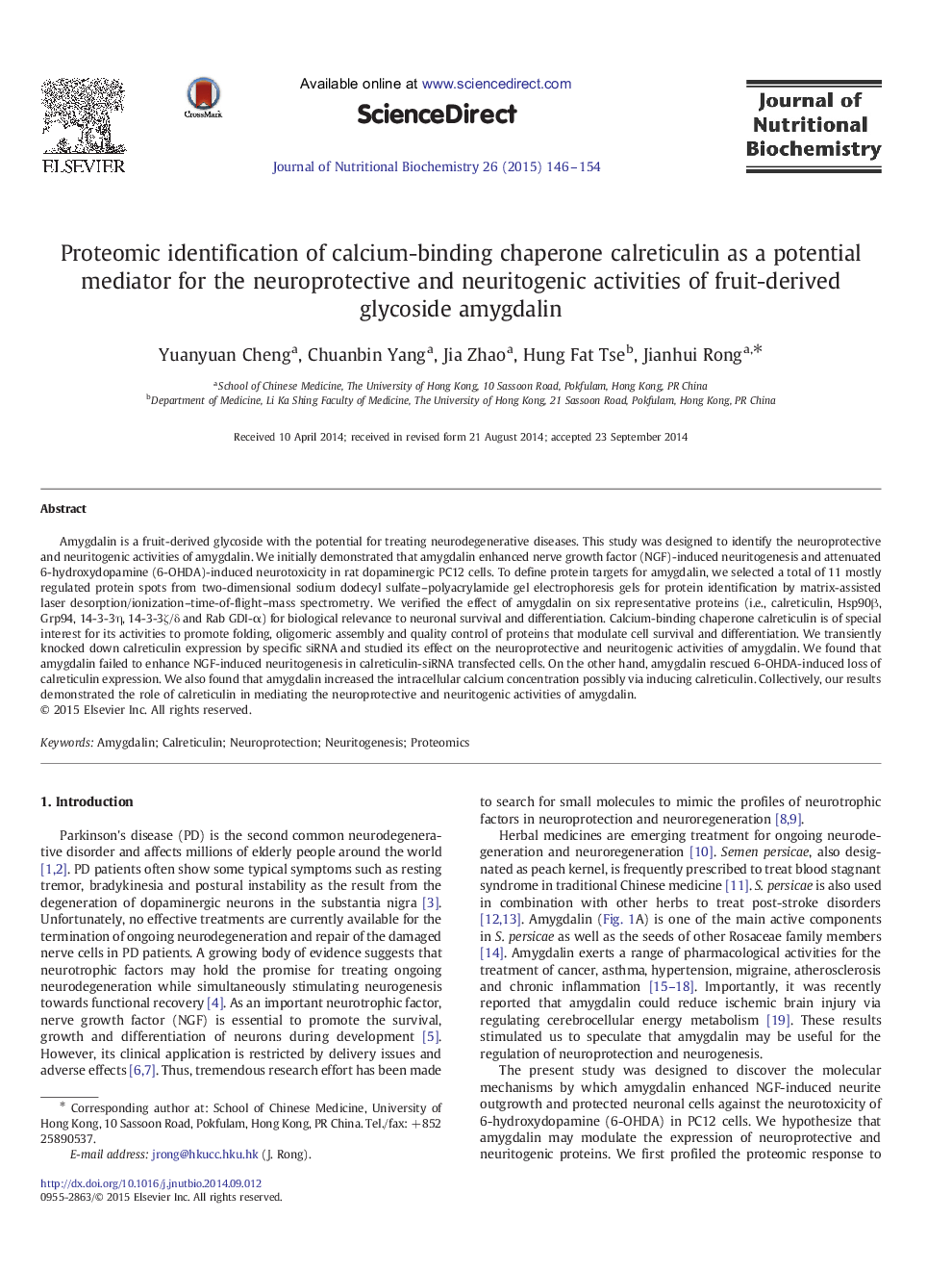| Article ID | Journal | Published Year | Pages | File Type |
|---|---|---|---|---|
| 1989692 | The Journal of Nutritional Biochemistry | 2015 | 9 Pages |
Amygdalin is a fruit-derived glycoside with the potential for treating neurodegenerative diseases. This study was designed to identify the neuroprotective and neuritogenic activities of amygdalin. We initially demonstrated that amygdalin enhanced nerve growth factor (NGF)-induced neuritogenesis and attenuated 6-hydroxydopamine (6-OHDA)-induced neurotoxicity in rat dopaminergic PC12 cells. To define protein targets for amygdalin, we selected a total of 11 mostly regulated protein spots from two-dimensional sodium dodecyl sulfate–polyacrylamide gel electrophoresis gels for protein identification by matrix-assisted laser desorption/ionization–time-of-flight–mass spectrometry. We verified the effect of amygdalin on six representative proteins (i.e., calreticulin, Hsp90β, Grp94, 14-3-3η, 14-3-3ζ/δ and Rab GDI-α) for biological relevance to neuronal survival and differentiation. Calcium-binding chaperone calreticulin is of special interest for its activities to promote folding, oligomeric assembly and quality control of proteins that modulate cell survival and differentiation. We transiently knocked down calreticulin expression by specific siRNA and studied its effect on the neuroprotective and neuritogenic activities of amygdalin. We found that amygdalin failed to enhance NGF-induced neuritogenesis in calreticulin-siRNA transfected cells. On the other hand, amygdalin rescued 6-OHDA-induced loss of calreticulin expression. We also found that amygdalin increased the intracellular calcium concentration possibly via inducing calreticulin. Collectively, our results demonstrated the role of calreticulin in mediating the neuroprotective and neuritogenic activities of amygdalin.
Graphical AbstractFigure optionsDownload full-size imageDownload high-quality image (198 K)Download as PowerPoint slide
